Hosted by
A+BE | Architecture and the Built Environment
Open access PhD thesis series on Architecture and the Built Environment. A+BE publishes exclusively PhD theses in the field of architecture, architectural engineering, green building, built heritage, history, urbanism, urban and regional studies, real estate, housing, geomatics, geodesign, and management of the built environment.
Series editor
Dr.ir. Frank van der Hoeven, TU Delft
Publisher
TU Delft Open
All Books

This study enlarges on the notion of composition in landscape architecture. It builds upon the ‘Delft method’, which elaborates composition as a methodological framework from its sister discipline architecture. At the same time takes a critical stance in respect to this framework, informed by recent epistemological developments in landscape architecture such as the site-specificity and process discourses. The notion of composition is examined from a historical and theoretical...

For decades, the new housing estates that were built in the Netherlands after World War II had a solid reputation as neighbourhoods of progress (Reijndorp & Van der Ven 1994). Young households were queuing up for a dwelling in these modernist urban areas, which were known for an abundance of light, air and space, though only higher-skilled and white-collar workers could afford to live there. But with growing prosperity and rising expectations for housing...

Adequate housing and shelter have been recognised by the United Nations (UN) as a human right. All signatory countries to the Universal Declaration on Human Rights are enjoined to take steps to provide decent and adequate housing to their people. To this end, the UN has led and advocated various policy initiatives aimed at addressing housing challenges globally. In the 1950s, it advocated direct housing production by member states. Since the 1970s, it has advocated the...
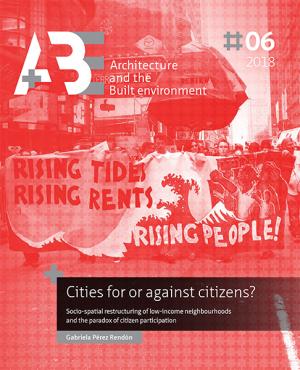
Urban renewal has evolved into an ambitious and sophisticated urban strategy, recognised as urban revitalisation in America and urban regeneration in Western Europe. This new urban strategy, which tends to be area-based and state-sponsored, claims for the most part to coordinate a wide range of resources, partners and public agencies to bring about social, economic and spatial improvements in underdeveloped and impoverished city areas while improving the livelihoods of the local residents....

From the 1960s to the 1970s, a large number of Western inner cities went through a phase of severe deprivation due to both a relocation of manufacturing jobs that in turn led to a depopulation, a lack of investment and high unemployment and to suburbanisation made possible by the car. From the 1990’s, urban regeneration strategies were introduced to tackle this inner city deprivation. In the United Kingdom, this ‘urban renaissance’ took place within the new economic and...

While agglomerations along the Rhine are confronted with the uncertainties of an increasing flood risk due to climate change, different programs are claiming urban river front sites. Simultaneously, urban development, flood management, as well as navigation and environmental protection are negotiating the border between the river and the urban realm. This produces complex spatial constellations between the river system and the urban realm with a diverse set of interdependencies, where...

The rate of home-ownership has increased significantly in many countries over the past decades. One motivating factor for this increase has been the creation of wealth through the accumulation of housing equity, which also forms the basic tenet of the asset-based welfare system.
In generating the home equity, house price developments play an important role. Generally, house prices show an increasing trend over long time period, however, there are short-term negative appreciations...

The springing up of freeform architecture and structures introduces many challenges to structural engineers. The main challenge is to generate structural forms with high structural efficiency subject to the architectural space constraints during the conceptual structural design process.
Structural Morphology is the study of the relation between form and force, which can be considered the guiding theory for this challenge. The relation between form and force is important for all...

This pioneering research focuses on Biomimetic Interactive Architecture using “Computation”, “Embodiment”, and “Biology” to generate an intimate embodied convergence to propose a novel rule-based design framework for creating organic architectures composed of swarm-based intelligent components. Furthermore, the research boldly claims that Interactive Architecture should emerge as the next truly Organic Architecture. As the world and...

As a result of the large amounts of CO2 emissions the built environment produces, it contributes immensely to climate change. Within the strategies developed to reduce anthropogenic CO2 emissions, getting buildings to an energy-neutral level is one of the main priorities. The blueprint for this altered energy-efficient building now seems to be ready: the heavily insulated outer shells of buildings have decreased the demand for energy and the necessary coolness and warmth are induced using...

The urban planner´s role should be adapted to the current globalised and overspecialised economic and environmental context, envisioning a balance at the regional scale, apprehending not only new technologies, but also new mapping principles, that allow obtaining multidisciplinary integral overviews since the preliminary stages of the design process. The urban heat Island (UHI) is one of the main phenomena affecting the urban climate. In the Netherlands, during the heat wave of 2006, more...
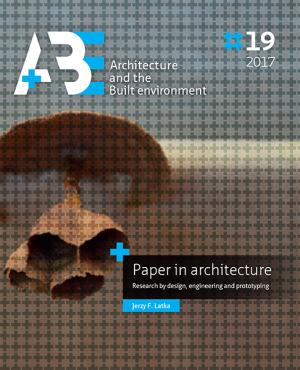
Paper is a fascinating material that we encounter every day in different variants: tissues, paper towels, packaging material, wall paper or even fillers of doors. Despite radical changes in production technology, the material, which has been known to mankind for almost two thousand years, still has a natural composition, being made up of fibres of plant origin (particularly wood fibres). Thanks to its unique properties, relatively high compression strength and bending stiffness, low...

Nowadays, there are many geo-information data sources available such as maps on the Internet, in-car navigation devices and mobile apps. All datasets used in these applications are the same in principle, and face the same issues, namely:
- Maps of different scales are stored separately. With many separate fixed levels, a lot of information is the same, but still needs to be included, which leads to duplication.
- With many redundant data throughout the...
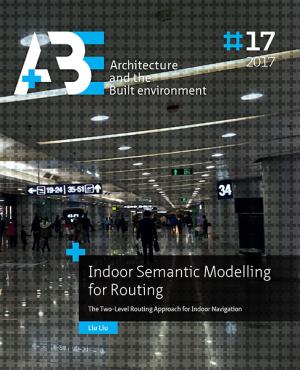
Humans perform many activities indoors and they show a growing need for indoor navigation, especially in unfamiliar buildings such as airports, museums and hospitals. Complexity of such buildings poses many challenges for building managers and visitors. Indoor navigation services play an important role in supporting these indoor activities. Indoor navigation covers extensive topics such as: 1) indoor positioning and localization; 2) indoor space representation for navigation model...

Much is known about the increasing levels of energy consumption and environmental decay caused by the built environment. Also, more and more attention is shown to the energy consumption of dwellings, from the early design stage until the occupants start living in them. The increasing complexity of building technologies, the occupants’ preferences, and their needs and demands make it difficult to achieve the aimed energy consumption levels. The goal of reducing the energy consumption of...

The construction industry is known for its waste of money and materials, low innovative capacities, and low productivity (Cox and Thompson, 1997; Vrijhoef, 2011). One reason is that the relationships between client and contractors is often perceived as a problematic one (Tazelaar en Snijder, 2010; Vrijhoef, 2011). Since decades, attention has been paid to supply chain partnering (SCP) in the construction industry, as a promising strategy to decrease waste of time and money and increase...

Following the UN world summits on Climate Change (Paris 2015) and Habitat (Quito 2016), most European cities assume an active role to implement internationally agreed goals related to climate change, translated in the so-called New Urban Agenda. At the same time, the urban housing market is increasingly inaccessible for low- and middle-income households. To overcome problems such as failing housing supply and high energy-bills, groups of residents take initiatives to create and manage...

Homes are renovated a number of times during their lifespan. Although we can regard each of these renovations as new, it is more prudent to implement a future-proof solution to renovation. Current renovation practice focuses on renovating to meet current demand. Many of the renovations are still extremely labour intensive and occur on site. This results in solutions to ensure that the house once again meets the required standards in the short term. These standards will continue to change...

In the past decades, diversity has become a popular catchphrase in theoretical, policy and public discourses in Canadian cities. Toronto is Canada’s most diverse city, wherein a long-standing immigration history coupled by the introduction of the Canadian Multiculturalism policy in the 1970s have rendered diversity a prominent value for the city’s inhabitants (Ahmadi and Tasan-Kok, 2014). Celebration of diversity has become a popular theme in Toronto’s policy and image making, such that...

Preparation for fossil fuel substitution in the building sector persists as an essential subject in architectural engineering. Since the building sector still remains as one of the three major global end energy consumer — climate change is closely related to construction and design.
We have developed the archetype sun space to what it is today : a simple but effective predominant naturally ventilated sun trap and as well as living space enlargement. With the invention of industrial...

In this study, the transformation of the form of nine cities in the Randstad between 1250 and 1940 in relation to changes in infrastructure is central, namely Utrecht, Dordrecht, Leiden, Haarlem, Delft, Gouda, Amsterdam, Rotterdam and The Hague. Within this time span three periods of great spatial dynamics are identified, namely the period 1240-1450, 1580-1680 and 1870-1940.
From the eleventh century large areas of hitherto inaccessible peatland were reclaimed and made suitable for...

The fall of the Berlin Wall in 1989 signalled a major change for Central and Eastern European (CEE) countries. Despite the significant benefits gained with the ‘return to Europe’, CEE countries have also been faced with large challenges (Gentile, Tammaru, & van Kempen, 2012; Kornai, 2006; Koví¡cs, 1999; Shleifer & Treisman, 2014). They had to transform their political and economic systems and find new ways to establish themselves in the context of increasing globalization,...
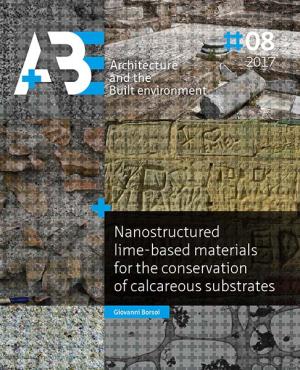
Nanolimes, i.e. dispersions of lime (Ca(OH)2)nanoparticles in alcohol, have been extensively investigated over the last two decades as consolidation products for calcareous substrates.
The use of nanolimes for consolidation of mural paintings arises from the lack of effective and compatible consolidants for this type of substrates; the use of nanolimes was later extended also to limestone and lime-based mortars, as an alternative for...

Potentials of a virtual environment for enhancing the creativity of architects have shaped this research. There is no singular definition of creativity. In fact, there are more than 100 different definitions of creativity according to different contexts and disciplines. Nevertheless, it is possible to confine the boundaries of definitions and address creativity within a confined framework.
The first practical step was thus to perform an in-depth...

While the consideration of functional and technical criteria, as well as a sense of coherence, are basic requirements for solving a design problem; it is the ability to induce an intended quality of aesthetic experience that is the hallmark of design expertise. Expert designers possess a highly developed sense of design, or what in this research is called aesthesis. Reflection on 25 years teaching design in the USA, Hungary, and China led to the observation that most successful...

Thin-walled glass fibre reinforced concrete (GFRC) panels are being used as the primary cladding material on many landmark buildings especially in the last decade. GFRC is an ideal material for building envelopes because it is durable, it can resist fire and the environmental impact is low compared to other materials, because the base materials used in the production of GFRC are widely available throughout the world. Thin-walled GFRC was initially developed as a cladding...

The economic reform in China, launched in the late 1970s, gradually promotes the free mobility of capital and labour between rural and urban areas, and between cities. The following housing market reform in the late 1990s thoroughly terminates the socialist allocation of housing and introduces market forces into the housing sector. Such institutional shifts have profound effects on the evolution of the Chinese interurban housing market. Yet, little is known about the spatial behaviour of...

There is a growing public expectation that universities should start focusing on delivering sustainability. The topic of sustainability in higher education has gathered a significant amount of interest from students, academics, governments and international organisations.
With a plethora of declarations, initiatives, marketing and assessments, there is a need to assess what the stakeholders want in order to make decisions regarding an institution's sustainability. Ultimately,...

Central to this PhD research was the problem of the lack of affordable housing for young starters in Malaysia. The solutions for affordable housing that are available in the market do not truly solve the problem from the customer’s point of view. Hence, it was important to analyse the contributing factors associated with the term ‘affordability’. The term touches upon interconnected elements that cover many issues ranging from demand (housing needs, demographics, household income, quality...

In climate-responsive design the building becomes an intermediary in its own energy housekeeping, forming a link between the harvest of climate resources and low energy provision of comfort. Essential here is the employment of climate-responsive building elements, defined as structural and architectural elements in which the energy infrastructure is far-reaching integrated. This thesis presents the results of research conducted on what knowledge is needed in the early stages of the design...
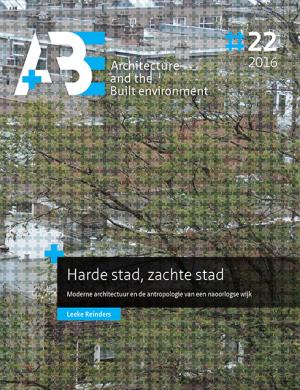
There is something irrevocable in architecture. In contrast with a painting or a musical play, one cannot alter an architectural work of art other than by blowing it up or pulling it down. Streets, buildings, squares and parks are part of the hard, physical environment in which we organize our lives. But why conceptualize architecture as a finished product? What happens when the plans have been drawn, the buildings completed, the public space decorated and the pictures taken for design...

If data are the building blocks to generate information needed to acquire knowledge and understanding, then geodata, i.e. data with a geographic component (geodata), are the building blocks for information vital for decision-making at all levels of government, for companies and for citizens. Governments collect geodata and create, develop and use geo-information - also referred to as spatial information - to carry out public tasks as almost all decision-making involves a geographic...

Supply Chain Management (SCM) and Building Information Modelling (BIM) are seen as innovations that can manage complexities in construction by focusing on integrating processes and products respectively. Whereas these two innovations have been considered compatible, their practical combi-nation has been mainly anecdotal. The Netherlands was the locale of this study, where both SCM and BIM have been popular approaches. The research objective is to explore their real-world...

Many delta and coastal cities worldwide face increasing flood risk due to changing climate conditions and sea level rise. The question is how to develop measures and strategies for existing urban coastal areas that can anticipate these slowly changing conditions, such as gradually increasing sea levels and extreme river discharges.
There is growing recognition that the increasing vulnerability of urbanised delta and coastal cities is strongly related to urbanisation, changing...

The study of dynamic spatial and social phenomena in cities has evolved rapidly in the recent years, yielding new insights into urban dynamics. This evolution is strongly related to the emergence of new sources of data for cities (e.g. sensors, mobile phones, online social media etc.), which have potential to capture dimensions of social and geographic systems that are difficult to detect in traditional urban data (e.g. census data). However, as the available sources increase in...

The aim of this thesis is to add knowledge to the role and impact of policy instruments in meeting energy performance ambition in the existing owner occupied housing stock. The focus was instruments available in the Netherlands in 2011 and 2012. These instruments represented the ‘on the ground’ efforts to meet climate change targets and many continue to do so today in the same or slightly altered forms.
At international level there is a recognized need to...
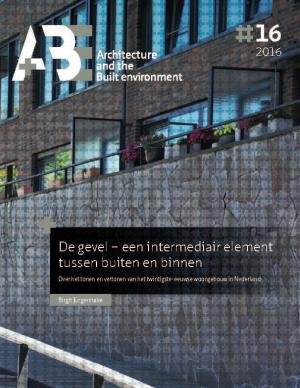
This study is based on the fact that all people have a basic need for protection from other people (and animals) as well as from the elements (the exterior climate). People need a space in which they can withdraw from the rest of the world. The two states, inside and outside, public and private, contact with, or isolation from, the outside world, are relevant in fulfilling this basic need. People also want their home to have a certain appearance or status which they can identify with and...

The Dutch lowlands is an artificial landscape, created as a result of the wish to regulate the water that dominated the topography in the Delta. This ‘confined’ lowland water, the polder-boezem system12, features an enormously diverse range of water structures and forms, which largely dictates the spatial planning of the lower Netherlands.
This dissertation concerns the polder-boezem system, a water system that was created by...

This dissertation reports a PhD research on mathematical-computational models, methods, and techniques for analysis, synthesis, and evaluation of spatial configurations in architecture and urban design. Spatial configuration is a technical term that refers to the particular way in which a set of spaces are connected to one another as a network. Spatial configuration affects safety, security, and efficiency of functioning of complex buildings by facilitating certain patterns of movement...

The aim of the research presented in this thesis is to design the characteristics of an Adaptive Thermal Comfort System for Dwellings to achieve a significantly better energy performance whilst not compromising the thermal comfort perception of the occupants. An Adaptive Thermal Comfort System is defined as the whole of passive and active comfort components of the dwelling that dynamically adapts its settings to varying user comfort demands and weather conditions (seasonal, diurnal and...

This thesis examines the development of technology campuses as built environments and their role in stimulating innovation. Technology campuses entail a variety of built environments developed to accommodate technology-driven research activities of multiple organisations. The science park is the most common type of technology campus. Other types include the campuses of universities of technology and corporate R&D parks.
In industrialised countries, the demand for...

This thesis presents research into the possibilities for climate adaptation in Dutch urban areas. We want to know how cities can best prepare for extreme rainfall, droughts, and heat waves in future climates. These events are likely to become more frequent and more extreme. The focus is on heat resistance as this has been a neglected concept in Dutch urban planning.
The aim of this study is to extend our knowledge of the effects of climate-adaptation measures and to stimulate the...

Iranian historic city cores are important parts of modern cities because of their valuable monuments and morphology but are also significant because of their population density, location and the major governmental functions they house. Since 1920, modernisation policies and urban development trends in Iran have justified spatial transformation and redevelopment and the demolition and destruction of traditional urban fabrics as a way to provide contemporary requirements and hygiene...

Well into the twentieth century, brick and stone were the materials used. Bricklaying and stonemasonry were the construction technologies employed for the exterior walls of virtually all major structures. However, with the rise in quality of life, the massive walls alone became incapable of fulfilling all the developed needs. Adjacent systems and layers had then to be attached to the massive layer. Nowadays, the external wall is usually composed of a layered construction. Each external...

Enhancing our knowledge of the complexities of cities in order to empower ourselves to make more informed decisions has always been a challenge for urban research. Recent developments in large-scale computing, together with the new techniques and automated tools for data collection and analysis are opening up promising opportunities for addressing this problem. The main motivation that served as the driving force behind this research is how these developments may contribute to urban data...

More than half of the world’s population currently lives in urban settlements, a proportion that is expected to increase to more than 65 percent by 2050 (UN, 2014). The larger agglomerations are a complex spatial configuration of places and flows that are polycentric by nature, or at least they demonstrate a certain development of a multi-center structure. Recently, the focus on agglomerations’ polycentric structure has attracted a great deal of attention from both researchers and...

Subject
Evidence-Based Design in hospitals.
Problem
What role can Evidence-Based Design have in the design of better hospitals?
Purpose
To determine spatial (or: concrete) qualities, scientifically proven to have a positive influence on the health and well being of patients and staff, in order to offer the architect a helping hand for designing better hospitals. These measures are drawn from research...

The necessity for transition in the energy sector is beyond dispute and high on the political agendas. Climate change, the depletion of fossil fuels and the vulnerability of economies to resource speculation and unreliable political systems in the producing countries lay path for a broad implementation of smart alternative solutions. This means the integration of more sustainable renewable energy sources in the existing supply structures or the displacement of existing systems by new ones....
